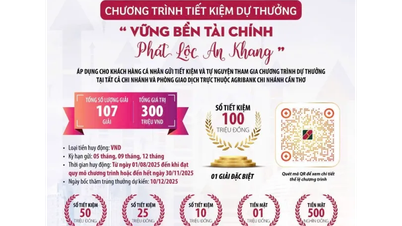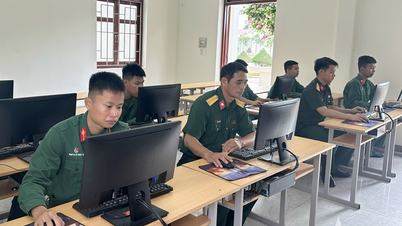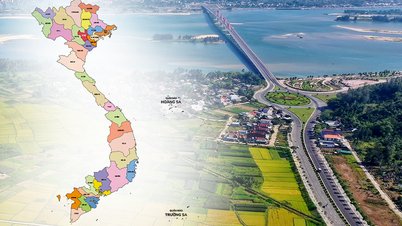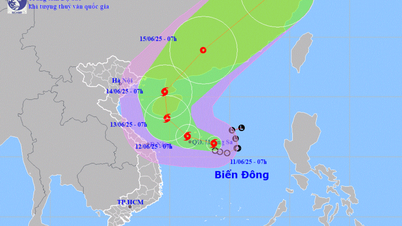Mr. Michael Kokalari, Director of Macroeconomic Analysis and Market Research Department (VinaCapital), commented that foreign investment capital will return to the Vietnamese stock market in 2025.
Mr. Michael Kokalari, Director of Macroeconomic Analysis and Market Research Department (VinaCapital), commented that foreign investment capital will return to the Vietnamese stock market in 2025.
 |
| Mr. Michael Kokalari, Director of Macroeconomic Analysis and Market Research (VinaCapital) |
In your opinion, what will be the psychology of foreign investors in the Vietnamese market in 2025?
We believe that foreign investor sentiment will improve in 2025 compared to 2024. Specifically, foreign investment is expected to return to the Vietnamese stock market, partly because investors will gradually realize that President Trump's policies do not negatively affect Vietnam, along with the attractive valuation of the Vietnamese market compared to other countries in the region and the profit growth of listed stocks.
How do you assess the flow of foreign direct investment (FDI) and foreign indirect investment (FII) into Vietnam in 2024 and forecast for 2025?
Overall, the results of FDI attraction in Vietnam in 2024 are very positive and the outlook for 2025 remains strong. In 2024, FDI disbursement increased by 9.4%, reaching about 25.35 billion USD, equivalent to about 5% of Vietnam's GDP.
In 2025, we expect FDI disbursement to increase by 7-10%, in line with the growth rate of planned FDI in 2024 (planned FDI in a year will usually become actual FDI disbursement in the next 1-2 years). However, planned FDI in 2025 may decrease slightly compared to 2024, as it may take some time for foreign investors to clearly realize that President Trump's policies do not negatively affect Vietnam's ability to export to the US. In addition, foreign investors may also need time to get used to Vietnam's global minimum tax (GMT) and Investment Support Fund (ISF). Addressing these concerns may take more than a year, leading to lower planned FDI in 2025.
Regarding FII, we forecast that foreign investment will return to the Vietnamese stock market in 2025, partly due to strong growth in listed companies' profits from around 13% in 2024 to around 17% in 2025. Furthermore, market valuations remain attractive with a forward P/E of 12x, one standard deviation below the 10-year average of the VN-Index and 20% below the valuations of regional markets.
What policy recommendations does VinaCapital have to support the economy and stock market in 2025?
The simplest way to stimulate consumer spending and boost Vietnam's GDP growth in 2025 is to speed up the approval process for real estate projects and increase infrastructure spending.
In the long term, Vietnam should focus on moving up the manufacturing value chain and exploiting strong opportunities in artificial intelligence (AI) and semiconductors. Strengthening Vietnam’s higher education system, especially in science, technology, engineering and mathematics (STEM), is crucial to realizing Vietnam’s potential in high-tech industries.
In addition, the successful upgrade from frontier market to emerging market by the FTSE Market Rating Organization will create positive sentiment for investors and attract more capital into the stock market. Currently, Vietnam has met almost all of FTSE's criteria to be recognized as an emerging market, thanks to recent administrative reforms that have brought the stock market's operations closer to international standards.
In particular, simplifying administrative procedures is an important step to stimulate the economy in the long term. By removing bottlenecks, accelerating policy implementation and reallocating resources, the government can significantly expand the capital available for development, creating a more favorable environment for business and investment. New laws in areas such as real estate reflect a commitment to reform, which can open up new growth opportunities.
Can you share about VinaCapital's strategy in Vietnam in the coming time?
Our investment strategy in Vietnam includes both private and listed companies. While specific investment themes may change from year to year depending on circumstances and opportunities, our consistent objective over the years has been to invest in companies that benefit from the growth of Vietnam’s emerging middle class.
Vietnam’s middle class is growing rapidly, accounting for about 13% of the population, forecast to reach 26% by 2026 and 33% by 2030. This growth opens up opportunities for companies targeting domestic consumption, as product penetration rates remain low compared to emerging markets in the Asian region.
Source: https://baodautu.vn/dong-von-dau-tu-gian-tiep-nuoc-ngoai-se-quay-tro-lai-d244630.html

































































































Comment (0)